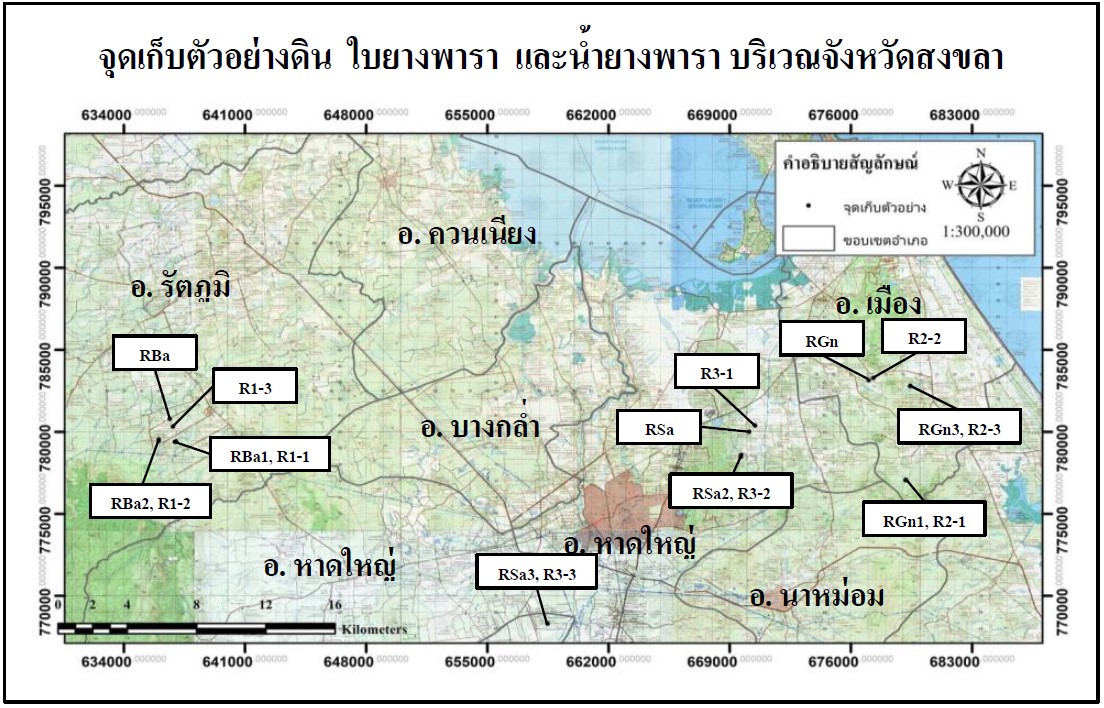Nutrient status in rubber growing soil, rubber leaf and nutrient concentration in latex under different rubber-based intercropping plantation
Keywords:
Nutrient status, Rubber-base intercroping, Rubber growing soil Rubber leaf, latexAbstract
At present, there is increased rubber-based intercropping plantation. However, the studies of nutrient status in rubber-based intercropping plantation are limited. The rubber growing soil, rubber leaves and latex in different rubber-based intercrops; rubber-bamboo, rubber-Phak-liang, rubber-Sala and rubber monocropping close to rubber-based intercropping were collected to study nutrient status for optimal fertilizer use management. The results showed that nutrient concentrations of rubber growing soil, rubber leaves and latex in rubber monocropping was not significantly different with rubber-based intercropping. Nitrogen, potassium and magnesium status of rubber growing soil and rubber leaves were low. While available phosphorus and extractable calcium concentrations of rubber growing soil and rubber leaves were medium to high. However, available phosphorus, extractable calcium and magnesium of rubber-based intercropping tended to be higher than rubber monocropping, which corresponded to phosphorus and magnesium concentrations in rubber leaves and magnesium in latex. Available phosphorus of rubber growing soil was significantly correlated with phosphorus concentrations of rubber leaves. The results indicates that rubber-based intercropping increases available phosphorus, extractable calcium and magnesium concentrations in rubber growing soil. However, nitrogen, potassium and magnesium concentrations in rubber growing soil and rubber leaves remain low. Therefore, fertilizer application based on soil or leaf analysis should be practiced, especially nitrogen, potassium and magnesium based fertilizers.

Downloads
Published
Issue
Section
Categories
License
Copyright (c) 2022 The Journal of Applied Science

This work is licensed under a Creative Commons Attribution-NonCommercial-NoDerivatives 4.0 International License.

